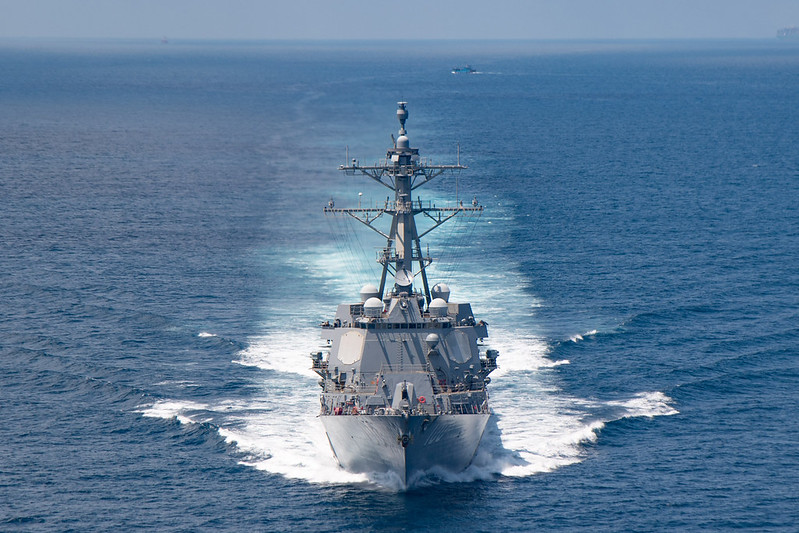
With Trump taking a seat in the Oval Office once again, China is also back in the news. Having announced the start of tariffs on Chinese products it appears the animosity between Beijing and Washington DC during Trump’s first presidency is likely to return, possibly triggering a new trade war. Not only that but China also appears to be continuing its preparations for war with Taiwan, officially known as the Republic of China (ROC). Satellite imagery has captured the building of five, or possibly more, amphibious ships designed to offload tanks and other heavy vehicles directly onto land, without requiring a port. They are designed to “reach a coastal road or hard surface beyond a beach”, essentially extending a 120 meter long bridge over the soft sand onto suitable ground for troops and heavy vehicles. Their construction strongly suggests that China is planning to use them on an attack against Taiwan.
But why is China so keen to invade and occupy Taiwan? As a history student, I have always been interested in finding historical precedents within the modern world. Much of geopolitics can be traced back to the past and to the actions of those who lived long before anyone being affected today. The invasion of Ukraine was largely rationalised by Putin in historical terms, as exemplified by his monologue to Tucker Carlson. The conflict in the Middle East, particularly involving Israel, dates back over a century – and even further when considering religious texts and the region’s ancient history. These conflicts are then sustained over time, as hate and division become entrenched over hundreds of years.
With this in mind, this piece will look at the historical precedent and reasons behind China’s desire to control Taiwan. Economically, it is the world’s main microchip manufacturer, and one measure puts a Taiwanese country, TSMC, as controlling half the world’s market. Strategically, it sits right in the middle of the “first island chain”, a list of US friendly territories that are crucial to its foreign policy goals in the region. No doubt this is also part of the reason that the US is so keen to defend Taiwan. Dominion over the island would significantly strengthen Beijing’s position in the region.
Taiwan has had several owners since about the 17th century. China invaded and occupied it at that time but lost it to the Japanese in 1895 after the First Sino-Japanese War. Then in 1945, when Japan was defeated at the end of the Second World War, China, once again, regained control. What followed was the second phase of the Chinese Civil War, a 4-year long conflict between General Chiang-Kai Shek’s Nationalist party, the KMT, and Mao Zedong’s communist party of China (CCP).
Initially, the KMT and CCP had worked together as the “United Front” to attack and drive back the Japanese forces. However, fighting between them was common, and the united front was fragile. Eventually, with help from US efforts in the Pacific and their island-hopping strategy, culminating in the dropping of the atom bomb, Japan surrendered. As soon as this happened, the civil war began in earnest. It was a devastating conflict.
Around 2.5 million people lost their lives, an estimate which has been hard to pin down. The KMT were the stronger side, supplied by the US, larger in number and with a more modern and conventional fighting force. Mao’s CCP on the other hand, were guerrilla fighters, used to making do with what they had. As a result, Mao developed his brand of manoeuvre warfare, which he employed to great effect against the forces of the KMT. Eventually, in 1949, the KMT was defeated and Chiang-kai Shek, the KMT’s leadership and about 1.5 million followers were forced to flee to Taiwan. On October 1st, 1949, Mao proclaimed the People’s Republic of China (PRC) from Beijing. At war since 1911, the Chinese civilian population was tired of conflict, death and destruction. They longed for a time of peace, whoever was in charge. In Taiwan, Chiang-Kai Shek and the KMT leadership continued to plot how they were going to get the mainland back. They continued to call themselves Chinese, and in fact the ROC was recognised as the only Chinese government by the US and most Western powers, and held China’s seat on the UN Security Council. Then, in the late 1960s and early 1970s, critics began to argue that Taipei could not represent the people on the Chinese mainland, and in 1971, the UN switched recognition to Beijing. Now, only 12 countries recognise the ROC. Relations between Taipei and Beijing are poor.
For Beijing, the existence of Taiwan represents a loose end that must be addressed in order to finish gaining control over China. Beijing views Taiwan as a breakaway territory that needs to be brought back under it’s control to unify the nation, preferably peacefully but with force if necessary. Furthermore, although there are economic and geostrategic reasons, it is important not to discount the political ones. PRC control over Taiwan would put a definitive end to a conflict which essentially started 80 years ago.
Image: 210827-N-LH674-3084 TAIWAN STRAIT (Aug. 27, 2021) Arleigh Burke-class guided-missile destroyer USS Kidd (DDG 100) transits the Taiwan Strait. Kidd is deployed supporting Commander, Task Force (CTF) 71/Destroyer Squadron (DESRON) 15, the Navy’s largest forward-deployed DESRON and U.S. 7th Fleet’s principal surface force. (U.S. Navy Photo by Mass Communication Specialist 3rd Class Kaylianna Genier), US Pacific Fleet, 2021 // CC BY-NC 2.0

Average Rating